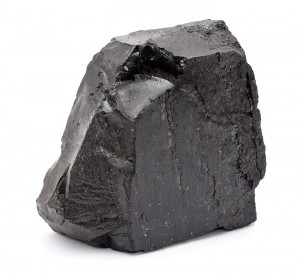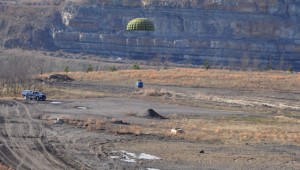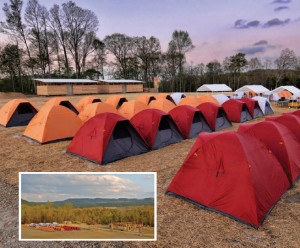By Daryle Bayless
 The history of West Virginia is built on coal. It is the foundation of our economy as well as much of our way of life. When people picture coal mining, the deep dark recesses of the Earth come to mind, but that is only a part of the story.
The history of West Virginia is built on coal. It is the foundation of our economy as well as much of our way of life. When people picture coal mining, the deep dark recesses of the Earth come to mind, but that is only a part of the story.
Surface mines allow coal companies to access coal seams throughout the state that cannot be accessed any other way. Roughly one-third of the coal from West Virginia, which amounts to about 50 million tons of coal annually, is from surface mines. “There are 215 active surface mines in West Virginia,” says Bill Raney, president of the West Virginia Coal Association. “These mines employ approximately 5,800 direct coal miners.” According to Raney, only about 1 percent of West Virginia has been impacted by surface mining.
Surface mining is an intensive industry and a very divisive subject throughout the state. Many detractors of the practice claim that land cannot be used for any other useful purpose after mining and that the natural beauty is forever destroyed.
The opposing argument is that the earth-moving operation of surface mining isn’t greatly different from building a commercial park or shopping center. “Any development is naturally limited by the landscape,” says Raney. In many cases, after mining operations are complete, land is configured for whatever use is needed at no cost to the future developer. “These sites have the potential to be very attractive to economic development, but the post mine land use also includes residential, educational and recreational uses.”
Many of the deep mines throughout the state exist because of the infrastructure created by surface mining. Areas that would not otherwise be accessible have been made so because the roads in the area were installed in a surface mining operation or installed on ground that was a previous surface mine.
When permits are requested by the coal industry for surface mining, the companies are required to return the area to its approximate original contour unless an exception, called a variance, is issued during the permit process. This happens when the coal industry finds a partner that has a plan for the land after mining is complete. The coal industry then configures the land to meet the requirements of the future land user. “The relationship begins the moment we begin looking at a site to determine whether it should be mined and how the mining should proceed,” says Raney.
Building any major project is very expensive. “Moving the amount of earth necessary to build a road, shopping center, school or an industrial park requires an investment of hundreds of thousands, if not millions, of dollars before construction of the facility or the road even begins,” says Raney. When a site has a good downstream alternate use, the coal industry can leave major utilities, roads and other infrastructure in place that can save the developer money.
Prior mine land can be used for more than just commerce and economic infrastructure development that will positively impact the state. The West Virginia National Guard (WVNG) and the Boy Scouts of America are two prime examples of organizations with national influences that are taking advantage of West Virginia’s post mine lands.
West Virginia National Guard
 Joint Base West Virginia, a concept spearheaded by the WVNG, is an initiative designed to give West Virginia a homeland security and national security training capacity that will benefit local and national war fighters as they prepare to deploy on missions that support our country’s interests. Local guardsmen are provided the opportunity to learn how to better employ their skill sets in support of their mission.
Joint Base West Virginia, a concept spearheaded by the WVNG, is an initiative designed to give West Virginia a homeland security and national security training capacity that will benefit local and national war fighters as they prepare to deploy on missions that support our country’s interests. Local guardsmen are provided the opportunity to learn how to better employ their skill sets in support of their mission.
“We work with the industry. We find a (training) gap where we can leverage the usefulness of the post mine use land,” says Major General James Hoyer, Adjutant General of the West Virginia National Guard. “We find a legitimate use for the land that I think is saving lives.”
One such site, the Drop Zone, is a 12,000-acre site in Clay County that has been made available to WVNG at no cost to the government. It allows pilots and crews an opportunity to practice low flying in which they must stay as close to the ground as they can to avoid enemy radar and weapons, as they would when approaching a drop site in the mountainous regions of Afghanistan. The Drop Zone is also certified for use by other military units from across the nation.
“If training to airdrop supplies makes it so that supplies can be dropped closer to the troops on the ground who need them, it could increase their chance of survival,” says Maj. Gen. Hoyer, explaining that these same skill sets are also useful for dropping supplies in the case of flooding or other statewide emergencies.
In response to the United States’ loss of troops and vehicles to
Improvised Explosive Devices (IEDs) in Afghanistan and Iraq, the Marines led the development of the Mine Resistant Ambush Protected (MRAP) armored fighting vehicle. The MRAP carries much greater armor protection, including a V-shaped hull to deflect blasts from IEDs. Though much more resistant to damage than prior vehicles used in combat zones due to being top heavy and weighing approximately 23 tons, they are difficult to drive and are subject to rolling over. “There was a training gap,” Maj. Gen. Hoyer says of the vehicles. “Folks were rolling the MRAPs over and dying from the rollover.”
The Advanced Mobility Training Area, adjacent to the WVNG’s Center for National Response Memorial Tunnel training complex, was developed by a team that included Afghanistan war veterans to address this national need. In addition to the MRAP rollover training simulator, there is a 13-acre driving course built on a prior mine site that is designed to look and feel like the terrain of Afghanistan. This allows deploying service personnel to get real life experience driving over difficult terrain under simulated wartime conditions.
According to Maj. Gen. Hoyer, without the ongoing partnership between the West Virginia National Guard and the coal industry, development of these types of training facilities with the current budget constraints would not be possible. “Using prior mine land is a great cost effective opportunity. It puts people to work locally on a national mission and brings people to West Virginia to spend money in our economy.”
The Summit Bechtel Family National Scout Reserve
 The Summit Bechtel Family National Scout Reserve, a Boy Scouts of America (BSA) reserve that lies on 10,600 acres along the New River near Beckley, is a site that many are surprised to find is located on prior surface mined land. “The fact that this was previously mining property made this project possible,” says Steve McGowan, lead volunteer for the Summit Bechtel project. “The benches and roads of the mine mean the road infrastructure was already in place and will save the BSA about $100 million in development costs.”
The Summit Bechtel Family National Scout Reserve, a Boy Scouts of America (BSA) reserve that lies on 10,600 acres along the New River near Beckley, is a site that many are surprised to find is located on prior surface mined land. “The fact that this was previously mining property made this project possible,” says Steve McGowan, lead volunteer for the Summit Bechtel project. “The benches and roads of the mine mean the road infrastructure was already in place and will save the BSA about $100 million in development costs.”
Included at the site are a National Center for Scouting Excellence, a High Adventure Base and a National Scout Summer Camp, which will give scouts and volunteers from all over the country a chance to learn about nature and participate in team building activities such as whitewater rafting, zip lining, target sports and rock climbing. In addition, the summit is the new home of the Boy Scouts of America National Jamboree, which is held every four years and hosts scouts from all over the country.
“Some of the areas that were mined by small mountaintop removal projects have left the BSA with hundreds of flat acres to support program elements with panoramic vistas of the surrounding areas,” says McGowan. “We believe this project is not only restoring the land but the spirit of the land and its people as well.”
According to a study conducted by Syneva Economics, LLC, operations at the summit will create more than 1,100 jobs and inject more than $25 million into the local economy, resulting in more than $9 million in tax revenue. The jamboree is expected to attract 250 thousand additional scouts and volunteers that will add $16 million every four years.
The ability to recover a prior mine and configure it to whatever use the future owner needs can be a major factor in attracting business and encouraging tourism within the state. “This project will bring people to West Virginia and introduce its natural beauty to the world,” says McGowan. “It makes a statement that with vision and partnerships we can have both the energy we need and the opportunity to do great things with West Virginia’s most abundant natural resource—its basic scenic beauty.”
Photography by the West Virginia National Guard and Boy Scouts of America



